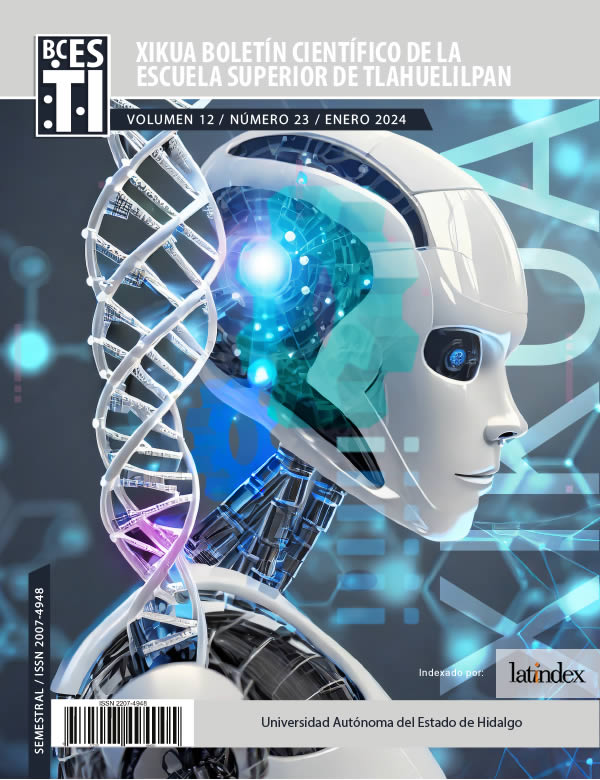Environmental temperature tendency at Hidalgo State and their relationship with health conditions: Analysis of the municipality of Tlahuelilpan
Abstract
The alteration of environmental temperature is one of the main consequences of climate change, which affects the health of the human population, even leading to death. The aim of the present study is to analyze the changes in environmental temperature, maximum, average, and minimum, in the state of Hidalgo (Mexico), over 14 years, as well as the effects (dehydration, heat exhaustion, heat strokes, burns, intoxication, and hypothermia) derived from it. In addition, the case of the municipality of Tlahuelilpan is addressed. Open government databases from the state of Hidalgo were consulted, cleaned, and treated, to later graph and analyze trends. The environmental temperature (maximum, average, and minimum) of the state of Hidalgo showed an increase of approximately 2 °C between 2007 and 2021, registering the highest temperatures from March to July, and the lowest in December to January. Likewise, as time passes, the first cases of dehydration, heat exhaustion, and heat strokes are registered from 2019. However, prior to this, cases of hypothermia, intoxication, and burns (indoor bonfires) were registered more frequently. With respect to environmental temperatures, hypothermia was the main cause of death. In the case of the municipality of Tlahuelilpan, the environmental temperature trend (maximum, average, and minimum) from 2007 to 2021 was opposite with a reduction of approximately 3 °C, which suggests that the effects related to low temperatures will be the main problem for this municipality.
Downloads
References
Marks L. Last Glacial Maximum in Poland. Quat Sci Rev. 2002; 21:103–10.
Rees PMA, Ziegler AM, Gibbs MT, Kutzbach JE, Behling PJ, Rowley DB. Permian phytogeographic patterns and climate data/model comparisons. J Geol. 2002;110(1):1–32.
Olivier JGJ, Peters JAHW. Trends In Global Co 2 And Total Greenhouse Gas Report [Internet]. 2020. Available from: https://www.pbl.nl/sites/default/files/downloads/pbl-2020-trends-in-global-co2-and-total-greenhouse-gas-emissions-2019-report_4068.pdf
Cuervo-Robayo AP, Ureta C, Gómez-Albores MA, Meneses- Mosquera AK, Téllez-Valdés O, Martínez-Meyer E. One hundred years of climate change in Mexico. PLoS One [Internet]. 2020;15(7 July). Available from: https://doi.org/10.1371/journal.pone.0209808
Tian Y, Liu H, Id YS, Cao Id Y, Song J, Li M, et al. Association between temperature variability and daily hospital admissions for cause- specific cardiovascular disease in urban China: A national time-series study. PLoS Med [Internet]. 2019;16(1):e1002738. Available from: https://doi.org/10.1371/journal.pmed.1002738
Ceballos G, Ehrlich PR, Barnosky AD, García A, Pringle RM, Palmer TM. Accelerated modern human-induced species losses: Entering the sixth mass extinction. Sci Adv. 2015;1(5).
Ochoa M, Castellanos R, Ochoa Z, Oliveros J. Variabilidad y cambio climáticos: su repercusión en la salud. Medisan. 2015;19(7):870–82.
Han J, Liu S, Zhang J, Zhou L, Fang Q, Zhang J, et al. The impact of temperature extremes on mortality: A time-series study in Jinan, China. BMJ Open. 2017;7(4).
Ceballos-Pérez SG. Climate and Climate Change in Hidalgo, Mexico. Int J Recent Eng Res Dev [Internet]. 2017;02(06):1–7. Available from: www.ijrerd.com
Wang J, Tang K, Feng K, Lin X, Lv W, Chen K, et al. Impact of temperature and relative humidity on the transmission of COVID-19: a modelling study in China and the United States. BMJ Open [Internet]. 2021; 11:43863. Available from: https://pubmed.ncbi.nlm.nih.gov/33597143/
. Picón-Jaimes, Y. A., Orozco-Chinome, J. E., Molina-Franky, J., & Franky-Rojas, M. P. (2020). Control central de la temperatura corporal y sus alteraciones: fiebre, hipertermia e hipotermia. MedUNAB, 23(1), 118-130.
. Chan EYY, Goggins WB, Kim JJ, Griffiths SM. A study of intracity variation of temperature-related mortality and socioeconomic status among the Chinese population in Hong Kong. J Epidemiol Community Health. 2012;66(4):3227.
. Yang J, Yin P, Zhou M, Ou CQ, Guo Y, Gasparrini A, et al. Cardiovascular mortality risk attributable to ambient temperature in China. Heart. 2015;101(24):1966–72.
. Rocklöv J, Ebi K, Forsberg B. Mortality related to temperature and persistent extreme temperatures: A study of cause-specific and age- stratified mortality. Occup Environ Med. 2011;68(7):531–6.
. Medina-Ramón M, Schwartz J. Temperature, temperature extremes, and mortality: A study of acclimatisation and effect modification in 50 US cities. Occup Environ Med. 2007;64(12):827–33.
. Gaxiola-robles R, Alfredo DJC de la R, Labrada-martagón V, Díaz-castro SC, Zenteno-savín T. Incremento de la temperatura ambiental y su posible asociación al suicidio en Baja California Sur ( BCS ) 1985-2008. Salud Ment. 2013;36(5):421–7.
Copyright (c) 2023 Benjamín López-Nolasco, Hector Hugo siliceo Cantero, Ariana Maya Sánchez, Socrates Lopez Perez

This work is licensed under a Creative Commons Attribution-NonCommercial-NoDerivatives 4.0 International License.









